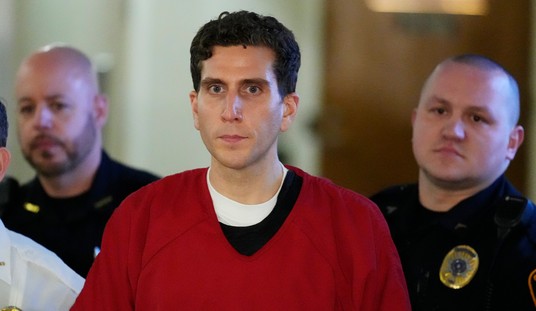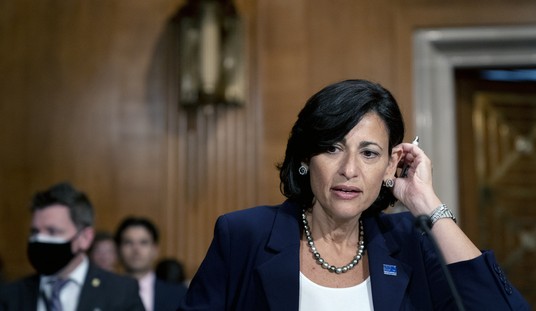Remember when we all but eradicated measles in the US, along with the 500 or so deaths it caused each year among children? Good times, good times. The rapidly increasing number of infections so far has not caused any fatalities, but those will be inevitable — especially since the medical profession has become so unfamiliar in handling patients infected with the disease:
Since 2000, the highly contagious disease has been considered eliminated in the United States, aside from occasional small outbreaks sparked by overseas travelers. For most of the last decade, the nation was seeing only about 60 cases a year.
But since 2010, the average has been nearly 160.
“This increase in cases may be a `new normal,’ unfortunately,” said Dr. William Schaffner, an infectious disease expert at Vanderbilt University in Nashville.
Contributing to the problem: Decades of measles vaccination campaigns have been so successful that many doctors have never seen a case, don’t realize how contagious it is, and may not take necessary steps to stop it from spreading.
Among the 58 cases reported from California, at least 11 were infected in doctor’s offices, hospitals or other health-care settings, according to a report released Thursday by the Centers for Disease Control and Prevention. New York City health officials say two of their 26 cases were infected in medical facilities. …
There has been no measles deaths reported in the U.S. since 2003. “But the way we’re going, we feel it (another) is inevitable,” Schuchat said.
Medical-facility retransmission, however, is a secondary problem. The primary issue in the US for the resurgence of measles is a lack of vaccination, and measles isn’t the only disease making a comeback:
In the past 20 years, a concerted public health campaign, especially among lower-income families, has made measles outbreaks rare. The disease has been considered eradicated since 2000. But today, the number of unvaccinated children has begun to become a problem, Schuchat said. Some people are choosing not to have their children immunized for personal reasons and others are unaware of, or unable to get, vaccinations, before they arrive in the U.S. She said the CDC is also seeing growth in the disease pertussis, also known as whooping cough.
Before vaccinations were available, about 500,000 people were infected with measles annually in the U.S., a number that fell to about 60 after the disease was all but eliminated in 2000. Since 2010, it has increased to an average of 155 cases per year. …
The proportion of vaccinated children varies by state, depending on the toughness of their immunization laws, Sammons said. Nationally the measles, mumps, rubella vaccination rate is over 90 percent, but in 15 states it is below that standard, she wrote. New York magazine reported last month on schools in California and New York with low immunization rates among students, in part because parents are choosing not to vaccinate them.
Ohio is also seeing a rapid increase in measles and mumps:
The CDC takes a positive approach in its advice to parents urging vaccinations on time and on schedule. Parents frightened off by anti-vaccination advocates like Jenny McCarthy should review actual research by the CDC, released last year, showing no connection between vaccinations and autism diagnoses:
A new study published in the Journal of Pediatrics Friday may put them at ease. Researchers found no association between autism and the number of vaccines a child gets in one day or during the first two years of the current vaccine schedule.
The research was led by Dr. Frank DeStefano, director of the Immunization Safety Office at the Centers for Disease Control and Prevention. Together with two colleagues, DeStefano and his team collected data on 256 children with autism spectrum disorder (ASD) and 752 children who did not have autism. The children were all born between 1994 and 1999 and were all continuously enrolled in one of three managed-care organizations through their second birthday.
The researchers not only counted how many vaccines a child was given, they also counted how many antigens within the vaccines children were exposed to over three different time periods: birth to 3 months, birth to 7 months and during the first two years. They also calculated the maximum number of antigens a child would receive over the course of a single day.
An antigen is an immune-stimulating protein found in a vaccine that prompts the body’s immune system to recognize and destroy substances that contain them, according to the NIH.
Some vaccines, like Hepatitis B, only contain one antigen for this one virus. However, at the time these children were vaccinated, the typhoid vaccine had 3,000 antigens per dose and the measles, mumps, rubella (MMR) vaccine had 24.
“When we compared those roughly 250 children with ASD and the roughly 750 children who did not have ASD, we found their antigen exposure, however measured, were the same,” said DeStefano. “There was no association between antigenic exposure and the development of autism.”
The researchers also found no association between antigenic exposure and ASD.
The return of these childhood diseases should be a national embarrassment, and any preventable deaths or damage done cause for shame.








Join the conversation as a VIP Member